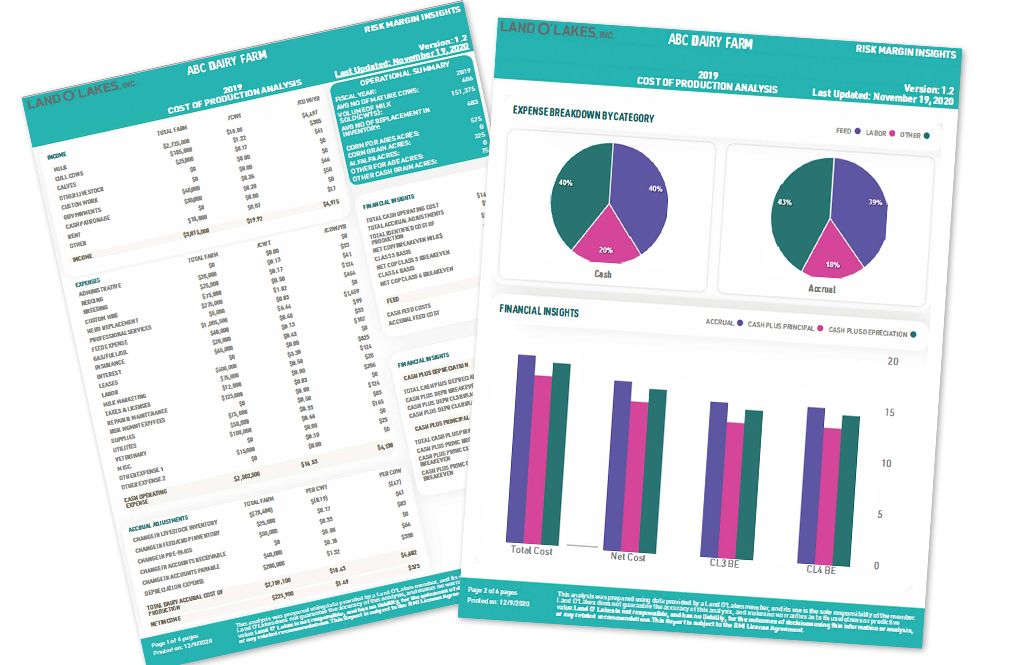[Watch] Risk Management Planning
An educational session on Cost of Production and milk sales planning

Planning for risk can seem like a daunting task. How can we plan when we can’t predict the future? While we don’t have access to a crystal ball, we can have tools in our toolbox that can mitigate risk – and that all starts with a solid risk plan. Where do we begin? One of the best strategies for risk management planning is understanding your cost of production. Our team of risk management experts has put together a brief training video to discuss the basics of understanding your cost of production, why its important to risk management and how can get started today.
In this educational session, Mark Halbakken, senior dairy business advisor leads members through Risk Management Planning. This forty-minute webinar outlines the following topics:
- The definition of Cost of Production (COP) (00:03:36)
- Walk through a basic P&L statement (00:07:18)
- Adding in class pricing and basis (00:12:39)
- How to look up basis on MPOL (00:15:54)
- Why knowing your Cost of Production is important (00:18:00)
- What you need to know to calculate Cost of Production (00:19:05)
- How Cost of Production is relevant to a milk sales plan (marketing plan) (00:34:37)
“Price volatility has an unmistakable and significant impact on cash flow, liquidity and business volatility” – Greg Squires
What is Cost of Production (COP)?
In dairy terms, Cost of Production is knowing how much it costs you to produce 100 pounds of milk (CWT). Net Cost of Production (NCOP) “Break-even milk price” = total operating costs – non-milk revenue or NCOP = gross milk revenue – net income
All costs associated with producing milk including variable costs such as animal health, utilities, feed, replacements, breeding, labor (family and hired) etc. It also includes fixed costs such as economic depreciation, interest, repairs, taxes and insurance.
Mark walks through a basic dairy profit & loss statement and explains how what cost of production means and how to calculate. He then discusses how to calculate net cost of production with your class price and monthly milk basis.
Basis is the month-to-month difference between an individual dairy producer's gross milk price and the USDA announced Class III price.
-
CME = Chicago Mercantile Exchange, class prices
-
Class III Basis = Gross Milk Price – Class III Price
-
Gross milk price (on your milk check) includes premiums like quality and volume, component values (+ or -), all other deductions and PPD
For more on milk pricing, watch ‘Milk Pricing 101’
Why knowing your Cost of Production is important
-
Improves your financial expertise
-
Helps you understand your cost centers and their trends
-
Builds a sound risk management plan
-
Enables you to better manage market price risk
-
Understand what target milk price will achieve a particular level of profitability
-
Allows you to determine a target price that will meet your operating margin goals
What you need to know to calculate Cost of Production
-
Option 1: Accountant-prepared accrual financial statements
-
Option 2: Cash P&L statement from farm accounting program
-
Option 3: 1040F and support schedules
-
Option 4: Receipts & expenses from farm account book
PMVAP Education Opportunities
This educational session is part three of the educational training offered as part of the Pandemic Market Volatility Assistance Program (PMVAP). See previous sessions here:
Want more? Our Risk Management Experts are available to all dairy members
Land O’Lakes has a team of risk management experts that can provide comprehensive and tailored education and services to all our dairy members at any time. For more information and your Dairy Business contact, visit the Risk Management page.